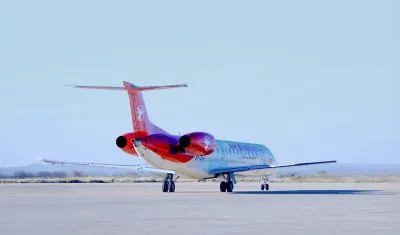After years decrying attacks on its strategic partners in Africa, the US has begun to actively participate in the fight against extremism on the continent. Peter Guest reports.
When more than 200 Nigerian schoolgirls were kidnapped by the Islamist group Boko Haram this April, it belatedly threw the terrorist group into the US consciousness. It certainly provided the US with a spur to intervene directly in a crisis that seemed to be spiralling out of control, sending troops into Chad to help coordinate the search for the missing girls.
The US has boots on the ground in Africa in a way that seemed unimaginable in the aftermath of the disastrous intervention in Somalia in the 1990s. There are now at least 14 sub-Saharan African countries with a US military presence, stretching from Burkina Faso in the west to Somalia in the east. The expanded operations, however, are pursuing a more collaborative, cooperative model, with US personnel supporting and training local forces.
“Increasingly we’ve witnessed a change in strategy where the US engages third parties when it comes to armed conflict,” says Emmanuel Kisiangani, a senior researcher at the Institute for Security Studies in Nairobi. “It provides technical advice, for example to the Amisom forces inside Somalia, and it also supports them financially. You only have a few technical advisers, and where necessary intelligence gathering.”
This approach, Kisiangani says, is in part a response to the public backlash against the 1993 “Battle of Mogadishu”, in which 18 US servicemen were killed over two days in 1993. It is also, he believes, an acknowledgement that local armed forces – although often lacking in capacity – are better placed to provide long-term solutions to regional security problems.
After a decade of relative peace and security on the continent, several resurgent insurgencies in Mali, Nigeria, the Horn of Africa and Central Africa have tested the capacity of local institutions. Attacks on soft targets in urban centres, such as Abuja and Nairobi resonated internationally and reinforced a longstanding concern amongst Washington’s security apparatus about the existence of ungoverned spaces where insurgent groups can establish footholds.
It is this concern that has driven US deployments since 2001. Before the Arab Spring, the US had a wide-ranging programme of military support and cooperation with North Africa. Even after the political upheaval, the US considers Tunisia a key part of its War on Terror, and has given millions in military aid. Likewise Morocco receives direct and indirect support for counter-terrorism operations and is the setting for regular joint training exercises and partnerships.
Algeria, which has been engaged in a long battle with Al Qaeda in the Islamic Maghreb (AQIM), has also cooperated with the US, sharing intelligence and participating in joint training. The country reportedly rejected a request from Washington to allow the establishment of a military base on Algerian soil earlier this year.
By far the largest – and most controversial – of Washington’s military alliances in the region is its long-term backing of Egypt with money and materiel worth $1.5 billion per year. That aid was suspended after the former president, Hosni Mubarak, was deposed and replaced, ultimately, by a candidate from the hardline Muslim Brotherhood, Mohammed Morsi. When Morsi too was removed in a military coup, the US reopened the taps. In June, Secretary of State John Kerry visited Cairo and released $575 million in military aid to the new government, headed by former army head Abdul Fattah al-Sisi. The US also promised to provide 10 Apache attack helicopters, to be used to control an insurgency in Sinai.
The direct spillover from North Africa’s revolutions and the rise of political Islam in countries that had overthrown their autocrats reached the rest of Africa in 2012. After the collapse of Muammar Gathafi’s regime in Libya, West African mercenaries returned to bolster the ranks of insurgent groups, including AQIM. AQIM won a series of engagements in the field against the Malian armed forces, prompting a coup in the capital. Concerned about the establishment of a de facto independent state, run by AQIM, in the north of Mali, the US provided intelligence and airlift support for a joint French and African Union operation to retake the north.
In Somalia, Al Shabaab has suffered a number of significant military reverses. A Kenyan-led force pushed the Islamist group out of Mogadishu in 2012, but the group has since managed to cross borders and strike at high profile targets, such as the Westgate shopping mall in Nairobi.
Although not directly linked to Islamic insurgency, the collapse of the Central African Republic into sectarianism in late 2013 has also concerned policymakers. It is this, as much as the public #Kony2012 campaign launched on Twitter and YouTube, that prompted the US to deploy 100 special forces soldiers to the region to help in the hunt for the Lord’s Resistance Army, a brutal militant group led by the infamous warlord Joseph Kony.
Some experts within the Washington establishment have long preached about an “arc of instability” that runs from the western Sahel through to Somalia, an open and porous space where terror groups are able to operate outside state control.
Want to continue reading? Subscribe today.
You've read all your free articles for this month! Subscribe now to enjoy full access to our content.
Digital Monthly
£8.00 / month
Receive full unlimited access to our articles, opinions, podcasts and more.
Digital Yearly
£70.00 / year
Our best value offer - save £26 and gain access to all of our digital content for an entire year!

 Sign in with Google
Sign in with Google 





